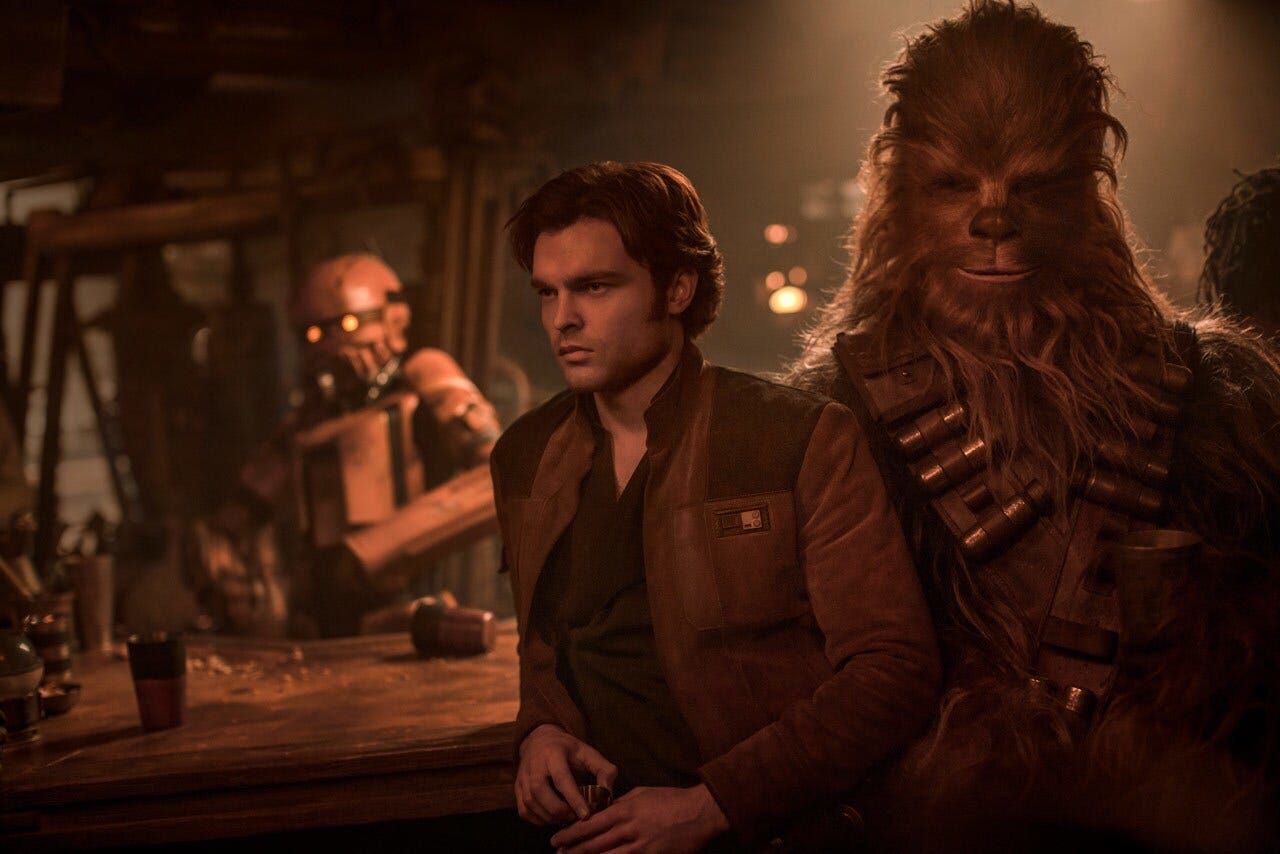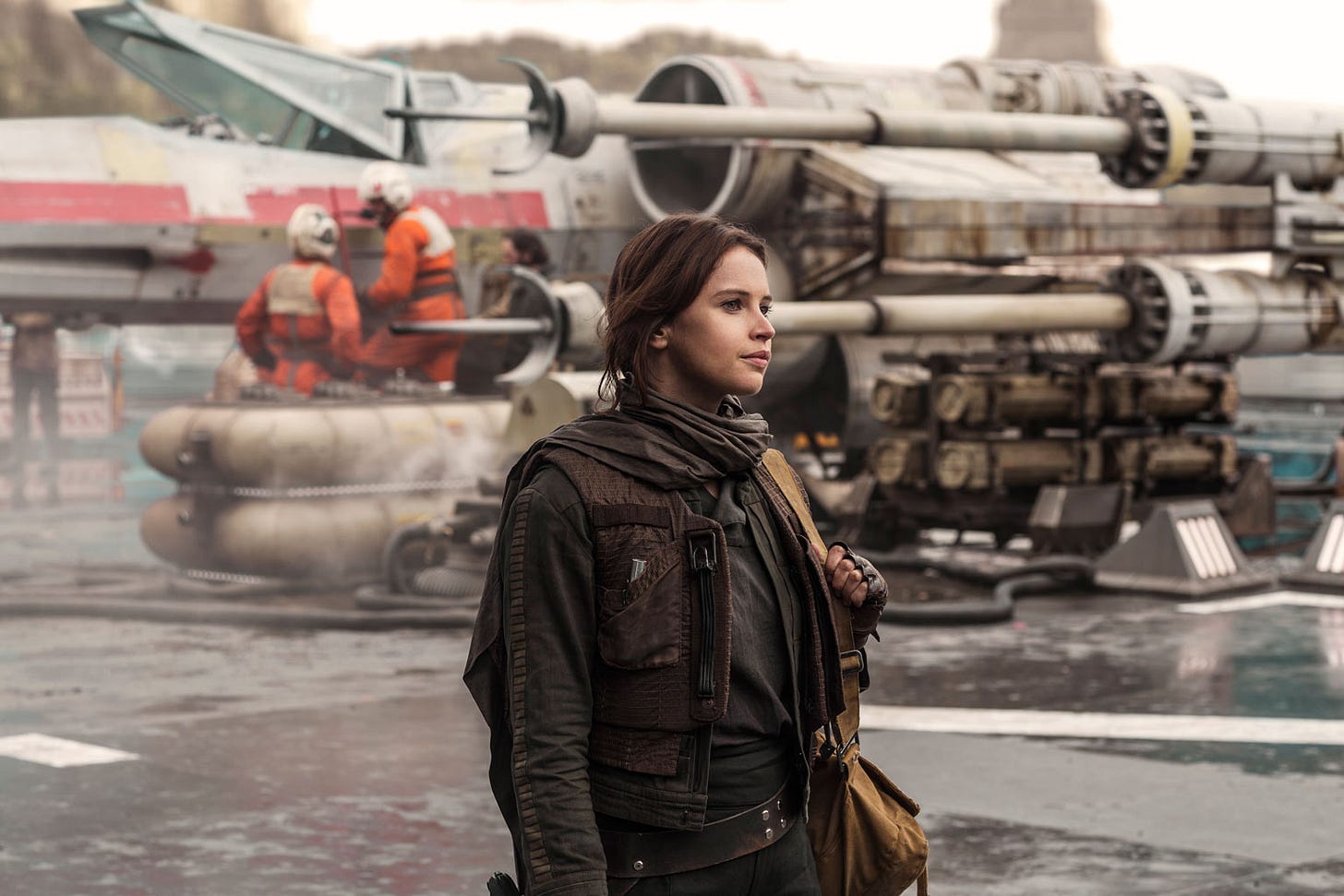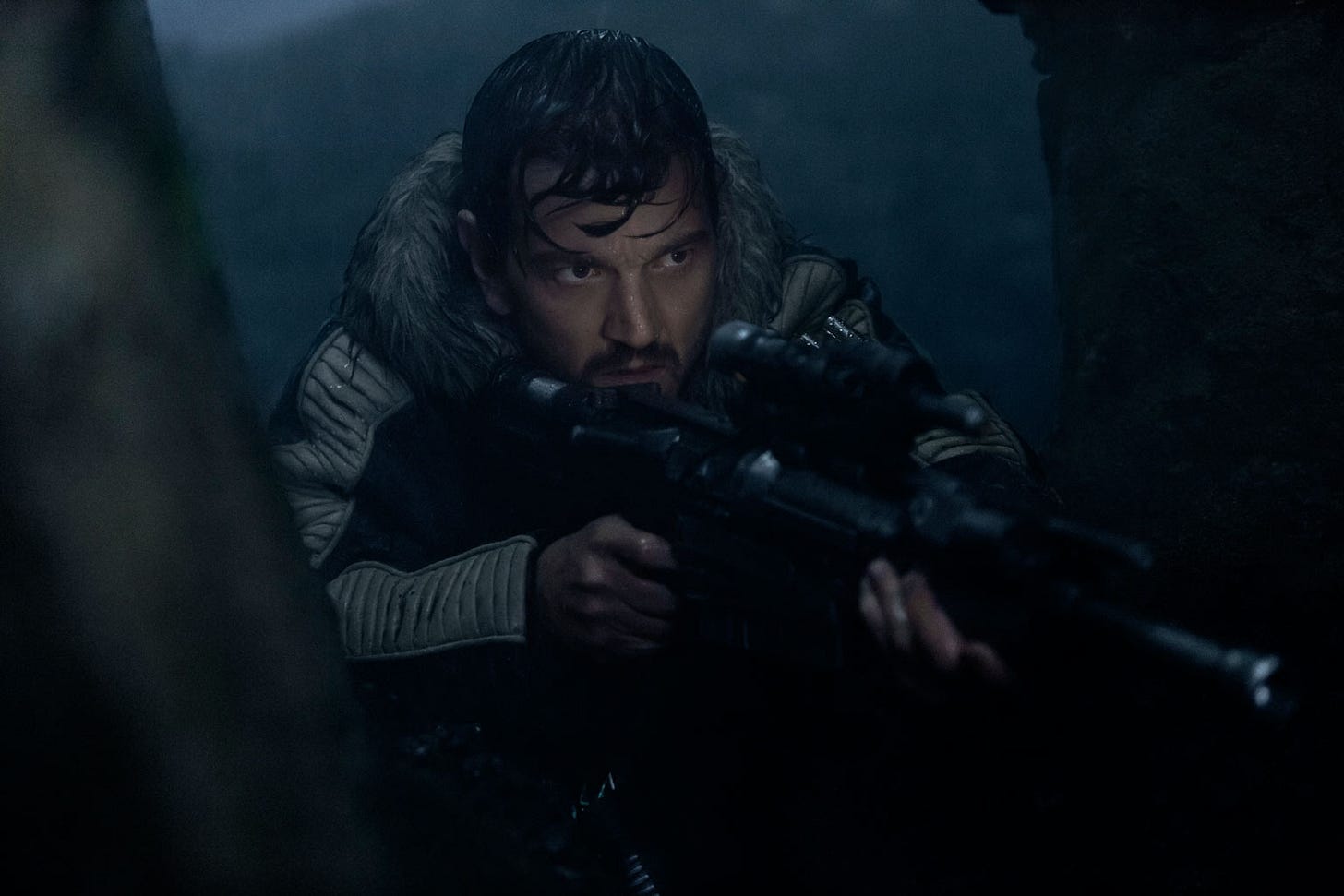If you’re looking for the rest of this series, you can find it here.

From high-flying pulp serials, the original Flash Gordon strip or something more relatively grounded, à la, the lasting imprint of Akira Kurosawa. While Star Wars may be a franchise proud to wear its influences on its sleeve, its own inherent spectacle has seen it, for close to fifty years now, exist as shorthand in the broader action-adventure zeitgeist.
This hasn’t always played in its favour, it is true, defined by those outsized expectations for decades. From a vocal minority that constitutes the lowest dredges of modern fandom or in more recent years, a billion-dollar corporate arm plagued by creative indecisiveness.
Though with the anthology films (and through them, Andor) it was to see the franchise look to actively alleviate this internal-external pressure, at least somewhat.
Still high-energy efforts but ideally, not burdened in the same way with expectation even if they circled the orbit of the close-held and familiar.
After all, every rebel started somewhere.
Solo: A Star Wars Story (2018)

After being separated from his partner-in-crime Qi'ra (Emilia Clarke) during a deal gone wrong, young smuggler Han Solo (Alden Ehrenreich) comes to find himself serving as a rank-and-file solider under the Empire’s ever-crushing grip.
Though when he crosses paths with criminal Tobias Beckett (Woody Harrelson), Han, alongside the warrior Chewbacca (Joonas Suotamo) and fellow smuggler Lando Calrissian (Donald Glover) is recruited to join Beckett’s crew for a dangerous retrieval job: where, with that somewhat rag-tag group of allies in hand, he comes to learn not just the joys of freedom but the cost as well, as he strives to make his name known and come to terms with his past.
Now, it is something of an interesting exercise.
Noticing, once one is looking for them, just how many small moments of seemingly innocuous pieces of dialogue or world-building in the original Star Wars trilogy became so deeply entrenched within the operating framework of the rest of the franchise, they were later held up as unmovable.
Consider: just how much weight, really, was Harrison Ford putting behind Han Solo’s colour dialogue, during his introduction in Mos Eisley, in A New Hope? Well, enough to enhance the viewer’s immediate understanding of his character and that film’s second act stakes yes but not much else besides.
And yet, the particular fascination with the character’s backstory that endured regardless can’t be totally discarded, either.
Rather, it was the execution, one way or another, that was far tricker.
Seemingly one of the final few projects George Lucas was developing for the franchise before he sold Lucasfilm to Disney, the film was infamously beset with a rather troubled production. Be it the firing of co-directors Phil Lord and Christopher Miller well into filming following a well-documented series of creative disputes with the suits and co-writer Lawrence Kasdan or Ron Howard, than coming aboard in their steed, at the eleventh hour.
The cloud that was hanging over the franchise come release by way of those previously mentioned, always online jabronis in the wake of The Last Jedi or a growing sense of collective Star Wars fatigue overall.
But for all those supposed caveats, on its own merits, Solo is nothing if not exactly what it sets out to be: a charming slice of coming—of-age heist filmmaking, with a solid enough Star Wars twist. Ehrenreich cuts a strong through line between a greener, still-finding-his-way Solo up against Harrison Ford’s more grizzled portrayal, while Glover’s always-present charisma as a younger but more defined Calrissian sees him stack up side-by-side next to Billy Dee Williams (who has voiced his support for Glover in the role, while Glover has confirmed, as of last September, that his spin-off film is still in-the-works).
Predictable, sure within its beat-by-beat framework (a heist movie is a heist movie, with all the trappings that implies) and inherently hamstrung (more so on a rewatch) by its insistence that seemingly every major element of Solo’s backstory needed a visible explanation but actively, enjoyably fun too, the way big-budgets outings (particularly Star Wars films) can often struggle with.
Not asking the viewer to commit themselves to something overly serious, simply to be along for the Millennium Falcon-sponsored ride, wherever in the galaxy it goes.
Rogue One: A Star Wars Story (2016)
After her mother is killed and her father Galen (Mads Mikkelsen), a scientist, is captured by the Empire, young Jyn Erso (Felicity Jones) comes under the wing of rebel leader Saw Gerrera (Forest Whitaker) and in time, becomes a solider of merit all her own.
But years later, when she is approached by the larger Rebel Alliance, Jyn slowly comes to realize that fighting for herself alone, in the face of the Empire’s tyranny, is no longer enough.
Joined by hardened revolutionary Cassian Andor (Diego Luna) and a collection of newly-formed allies, later to dub themselves, “Rogue One”, Jyn learns her father, who is still alive, has purposefully created a flaw in his design of the Empire’s planet-destroying superweapon, The Death Star.
And so, doggedly pursued by officer Orson Krennic (Ben Mendelsohn), they look to steal the Death Star schematics for the Rebels, hoping to turn the tide in the Alliance’s favour, whatever the cost.
Suggesting Star Wars’ is most at ease when relying on its past comfortability isn’t breaking any particularly new ground, it is true but Rogue One, the franchise’s first anthology film, takes that operating mantra and elevates it to its very limit, in pure practicality.
Directed by Gareth Edwards, with writing duties officially credited to Chris Weitz and Tony Gilroy, Rogue One is the prequel film to end all prequel films, primarily taking place just days before A New Hope as it answers a handful of long-simmering questions surrounding in the original. While also, retroactively, acting as a bookend to Gilroy’s prequel, Luna-led TV series, Andor (for which the second and seemingly final season is set to begin airing later this month).
Yet, rather than compressing and contorting itself up against those unavoidable limitations, for the most part, the film embraces them.
Showing what Star Wars can be, at its best, when it isn’t binding itself so strictly to expectation or table setting. For as the film moves firmly into its third act, it becomes clear that any ending it authors will be one of sacrifice and tragedy.
It isn’t as though such elements are totally lacking in the original trilogy but there is something, by design, of an unspoken safety net around its protagonists. Rogue One forgoes this, not once looking to dilute the reality in which its characters are operating in: a war, in which their enemies have impossible might.
The performances are strong, the minute details in the broader set and production design, openly shooting for a sense of New Hope verisimilitude, land almost seamlessly and the film, shot as it is, is clearly looking to emulate that specific style (with a dash of Vietnam War-Apocalypse Now colouring for good measure).
Elsewhere however, the pacing can be inconsistent and through that, the character work can feel rushed, even grafted on, if one looks too closely. And though physically portrayed on-set by Guy Henry and Ingvild Deila, the CGI-driven superimposing done in the sake of “continuity” for their respective characters (Grand Moff Tarkin and Princess Leia) is openly distracting and almost disingenuous. The film, its creatives, the above board executives, seemingly unable to trust either their audience or their performers in delivering as is, as they try to coast on past glories instead.
But all-in-all, like Solo after it, Rouge One brings a sense of no-holds-barred energy to the screen, even if it is a fight not all of its characters would be able to see truly won.
Setting the stage for something even grander to follow.







